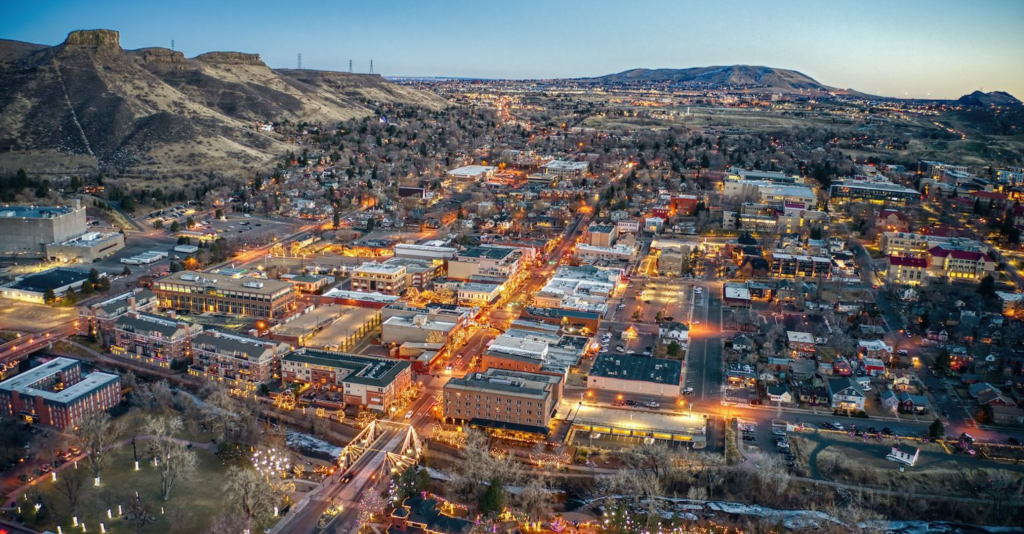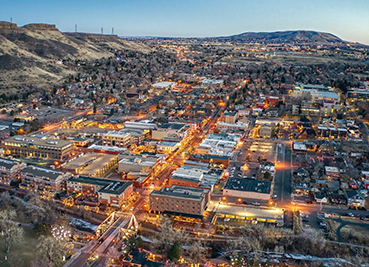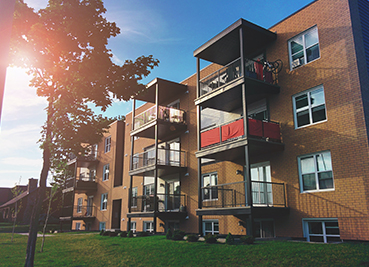
Ranked second in the nation for program success, Colorado is a billion dollars richer in projects, with rural towns and cities both reaping the bounty
Five years in, $1 billion has flowed into Opportunity Zones in Colorado, including $3 million to Naturita, where the federal program intended to raise living standards in economically depressed communities has helped one entrepreneur transform a former uranium-mining camp into a luxury glamping location, in turn creating a positive economic trickle-down in the town of 500.
The program, started in 2018 through the Tax Cuts and Jobs Act of 2017, offers lucrative tax incentives to investors, allowing them to duck capital gains taxes if they hold onto the investments for 10 years or more.
Beyond Naturita, it has led to millions in investments for workforce housing, infrastructure for broadband internet and a shelter for families experiencing homelessness created through a public-private partnership in Jefferson County.
Colorado has 126 Opportunity Zones, designated by census tract data. Investor funding has flowed into 75% of them, compared to the national average of 40% per state. Only Oregon has more zones than Colorado by one percentage point, said Jack Tiebout, senior program manager for Colorado’s Office of Economic Development and International Trade. States with the highest opportunity zone designation and investment are seeing growth, new business development and an expanding population, he said.
In Colorado, 56% of Opportunity Zones are located in a metropolitan area. Roughly 500,000 residents live inside Opportunity Zones, with nearly one-half identifying as a minority, 18% living below poverty level, 25% of adults unemployed and 52% considered rent burdened.
How investors and communities profit from OZs
OZ funding recipients — and by extension the communities surrounding them — benefit from the program by getting money for projects that spark economic activity. This includes things like campgrounds, tiny home villages and RV parks in towns such as Meeker, Buena Vista and Montrose, and housing in towns ranging from Durango to Trinidad to Estes Park.
In return, investors can defer paying taxes on an original capital gains investment if they put the capital gain into an Opportunity Zone fund. If they hold an Opportunity Zone investment for at least 10 years, they can avoid paying any tax on the capital gain.
Often, brokers are needed to help investors identify potential projects, which are born from the needs of people like Natalie Binder, who sought help from the program to convert the former Vanadium Corp. mining town, Vancorum, in Naturita, into the boutique glamping destination and artists’ nexus, CampV.
Binder and her partners Bruce and Jodie Wright purchased the Vanadium Corp. land in 2017 and went through the Telluride Venture Accelerator, where they met members of Four Points Funding, a real estate investment firm and developer focused on Opportunity Zones across Colorado’s emerging communities.
Four Points said it had been connecting angel investors with projects on the Western Slope for years. So when the Opportunity Zone program was announced, the firm began educating and evangelizing about it to investor communities. That work, Four Points partner Shawn Bertini said, put the firm “out ahead of the OZ curve,” with an investor base used to investing in cities, where projects are “well baked,” but willing to try in rural towns they didn’t necessarily understand.
Since the program began, Four Points has matched 222 investors to 21 projects, Bertini said. One reason the program has been so successful in Colorado is that its economy is “tourist driven, most significantly because we have these large, notable ski resorts people not only understand but often have an attachment to,” he added. And these often serve as anchors for Opportunity Zone-designated communities.
Naturita is about an hour northwest of Telluride on the edge of slickrock country, 90 minutes from Moab. With a $3 million investment from Four Points, Binder and her partners were able to build their dream development. CampV went live in April 2021, has since been featured in Condé Nast Traveler, Outside, and Travel & Leisure and has put other local businesses on the map, including Paradox Cycle, in Naturita, and Wild Gal’s Market, in Nucla, Naturita’s sister town 5 miles to the north.
Binder said projects like the ones the Opportunity Zone program has funded bring people and a mix of different businesses together, which over time helps build community. “They attract a very different demographic,” she added. “It’s difficult to attract investors to underserved, undeveloped communities like ours. But that’s why our government came together on one of the most amazing bipartisan bills to do this.”
How Four Points, investors and the federal government are addressing statewide problems
Bertini said housing makes up 80%-90% of projects Four Points has facilitated, with most of it in gateway communities. “That makes sense, because the rush to the mountains is undeniable,” he said. “But there’s such a dramatic shortfall of beds.”
To date, Four Points has raised over $90 million, which, when paired with debt, will result in well over a quarter billion dollars being injected into the communities in which the firm has invested.
One project, called The Eddy, along the Colorado River in Grand Junction, offers 980-square-foot, two-bedroom, two-bath apartments for $1,700 per month. That price is considered acceptable for households making between $56,000 and $81,000 per year according to the 2020 City of Grand Junction Housing Strategy.
Four Points “isn’t a low-income specialist,” Bertini said, so the firm focused on middle-market housing they believed they could bring to market quickly.
Significant new housing stock hadn’t been built in Grand Junction since the 1970s, he added. “Having some that’s fresh and clean along the river — I think that facilitates that longer vision of building up downtown and having people who moved there during the pandemic stay. That’s what we have in mind. Working with communities to advance this kind of plan. We believe that by increasing housing stock we can help improve affordability. If we improve supply relative to demand, we hope we can at least help stabilize housing prices, even if we‘re not able to reduce them in this current market.”
Helping the unhoused, bringing broadband to rural Colorado
Two other notable Opportunity Zone beneficiaries are a shelter for families experiencing homelessness in Lakewood and infrastructure for a massive broadband project throughout rural Colorado.
Lauren Coleman raised the funds to purchase the White Swan Motel on West Colfax Avenue through her design and development group, The Sursy, in 2020. But when COVID hit, she says, she lost the funding she’d counted on to renovate the place. While spending time in the area, she noticed a lack of clean, safe housing for families experiencing homelessness. Of housing that did exist, she asked Jefferson County Human Services, “‘Do you know if the water’s safe? Does the plumbing work? Is the place itself safe?’ And then, because in JeffCo there is no shelter specifically for homeless families, I made one up,” she said.
Opportunity Zone funding helped Coleman start operating the 100-year-old motel in a public-private partnership with JeffCo for a contract period of two years. She has since cleaned it up, made it “bright, welcoming and safe” and opened its doors to families struggling with homelessness. Now 20 families occupy the same number of rooms in the building.
“With new outdoor lights and security on premises, there is no crime on property,” Coleman added. And Jessica Hansen, director of JeffCo Prosperity Partners, a consortium of community, school, business and county partners working together to combat homelessness, said the White Swan not only houses families but connects them with “intensive wraparound services” such as visits from local libraries, school districts and homeless liaisons as well as mental health support.
When the contract is up, Coleman hopes to rebuild the motel, “restoring it to its former glory.” But she has no intention of leaving the community where she has helped house families experiencing homelessness. She plans to add a 5%-8% fee onto each room price, which will direct back to JeffCo to “further their mission to build a shelter that has a direct impact on the community,” she said.
And another participant, Arctaris Impact Investors, is working with The Colorado Health Foundation and the Finance Authority of Maine to use Opportunity Zone capital to deliver affordable broadband access to underserved communities in Maine and Colorado.
About 85,000 rural households in Colorado have slow to no access to broadband and limited access to adequate health care facilities and services. The project funding in both states will include an estimated $60 million of equity investment from the Arctaris Opportunity Zone Fund plus guarantee agreements, which provide a principal-protection cushion equal to 20% of each investment, from The Colorado Health Foundation and the Finance Authority of Maine.
“With the new housing and this broadband project, OZs are helping to take a little work off the state,” Tiebout, of OEDIT, said. “The broader goal was a program that would have some sort of social impact. The most straightforward projects are creating more affordable housing in these areas where there’s such a crunch. But we definitely didn’t anticipate the hundreds of miles of broadband infrastructure or the number of people who would want to help.”




